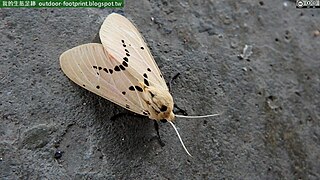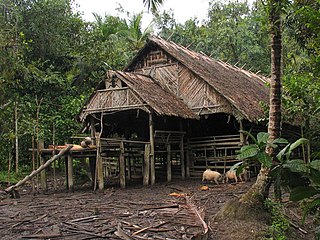
Sumatra is one of the Sunda Islands of western Indonesia. It is the largest island that is fully within Indonesian territory, as well as the sixth-largest island in the world at 473,481 km2 (182,812 mi.2), not including adjacent islands such as the Simeulue, Nias, Mentawai, Enggano, Riau Islands, Bangka Belitung and Krakatoa archipelago.

West Sumatra is a province of Indonesia. On the west coast of the island of Sumatra, the province had a 2019 estimated population of 5,479,491 across an area of 42,012.89 km2. The province includes the Mentawai Islands off the coast and borders the provinces of North Sumatra to the north, Riau and Jambi to the east, and Bengkulu to the southeast. West Sumatra is sub-divided into twelve regencies and seven cities. It has relatively more cities than other provinces outside of Java. Padang is the province's capital and largest city.

The Mentawai Islands Regency are a chain of about seventy islands and islets approximately 150 kilometres off the western coast of Sumatra in Indonesia. They cover 6,011.35 sq2 and had a population of 76,173 at the 2010 Census and 85,156 at the 2015 Census; the latest official estimate is 92,021. Siberut at 3,838.25 square kilometres is the largest of the islands. The other major islands are Sipura, North Pagai and South Pagai. The islands lie off the Sumatran coast, across the Mentawai Strait. The indigenous inhabitants of the islands are known as the Mentawai people. The Mentawai Islands have become a noted destination for surfing, with over 40 boats offering surf charters to international guests.

Mentawai Strait separates the island of Sumatra from the small archipelago of the Mentawai Islands, Indonesia. Its waters belong to the Indian Ocean and both banks are part of the province of West Sumatra.

Sipora located off Sumatra in the West Sumatra Province of Indonesia, is the second-smallest and most developed of the four Mentawai Islands at only 651.55 km2. It had a population of 17,557 at the 2010 Census; the latest official estimate is 23,122. The regency capital of the Mentawai Islands, Tuapejat, is found on Sipora. An estimated 10-15% of the original rainforest remains on this island.

Mentawai people are the native people of the Mentawai Islands, in Siberut, about 100 miles from West Sumatra province, Indonesia. They live a semi-nomadic hunter-gatherer lifestyle in the coastal and rainforest environments of the islands and are also one of the oldest tribes in Indonesia. The Mentawai population is estimated to be about 64,000. The Mentawai tribe is documented to have migrated from Nias – a northern island – to the Mentawai islands, living in an isolated life for centuries until they were discovered in 1621 by the Dutch. The ancestors of the indigenous Mentawai people are believed to have first migrated to the region somewhere between 2000 to 500 BCE. The Mentawai language belongs to the Austronesian language family. Additionally, Mentawai people call their homeland Bumi Sikerei. They follow their own animist belief system called Arat Sabulungan, that links the supernatural powers of ancestral spirits to the ecology of the rainforest. When the spirits are not treated well or forgotten, they might bring bad luck like illnesses and haunt those who forgot them. Mentawai also have very strong belief towards objects they think are holy. The people are characterized by their heavy spirituality, body art and their tendency to sharpen their teeth, a practice they feel makes one beautiful. Mentawai tend to live in unison and peace with the nature around them because they believe that all things in nature have some kind of spiritual essence.
The Mentawai language is an Austronesian language, spoken by the Mentawai people of the Mentawai Islands, West Sumatra, Indonesia.

Siberut National Park comprises 1,905 km2 (47%) of the island of Siberut in the Mentawai Islands of West Sumatra, Indonesia. The whole island including the national park is part of the World Network of Biosphere Reserves.

South Pagai is one of the Mentawai Islands off the west coast of Sumatra in Indonesia. It is south of North Pagai Island. The area and population figures given for South Pagai in the box to the right are for South Pagai District alone. They exclude the south part of Sikakap District, which covers the southern part of North Pagai Island and the northern part of South Pagai Island, together with various small islands in the strait between the two.
The Mentawai long-tailed giant rat is a species of rodent in the family Muridae. It is endemic to the Mentawai Islands archipelago off the west coast of Sumatra, in Indonesia. Its natural habitat is subtropical or tropical dry forest. It is threatened by habitat loss.

Spilarctia is a genus of moths in the family Erebidae. The genus was erected by Arthur Gardiner Butler in 1875.

The 2010 Mentawai earthquake occurred with a moment magnitude of 7.8 on 25 October off the western coast of Sumatra at 21:42 local time. The earthquake occurred on the same fault that produced the 2004 Indian Ocean earthquake. It was widely felt across the provinces of Bengkulu and West Sumatra and resulted in a substantial localized tsunami that struck the Mentawai Islands.

Uma are traditional vernacular houses found on the western part of the island of Siberut in Indonesia. The island is part of the Mentawai islands off the west coast of Sumatra.
Spilarctia adelphus is a moth of the family Erebidae. It was described by Walter Rothschild in 1920. It is found on Sumatra in Indonesia.
Spilarctia rufofusca is a moth in the family Erebidae. It was described by Thomas in 1994. It is found on Sumatra in Indonesia.
Spilarctia gurkoi is a moth in the family Erebidae. It was described by Vladimir Viktorovitch Dubatolov and Yasunori Kishida in 2010. It is found in the Mentawai Islands of Indonesia.
Spilarctia denigrata is a moth in the family Erebidae. It was described by Thomas in 1993. It is found on Sumatra in Indonesia.
Spilarctia procedra is a moth in the family Erebidae. It was described by Charles Swinhoe in 1907. It is found on Sumatra in Indonesia.
Spilarctia siberuta is a moth in the family Erebidae. It was described by Vladimir Viktorovitch Dubatolov in 2006. It is found in the Mentawai Islands of Indonesia.
Spilarctia rhodius is a moth in the family Erebidae. It was described by Walter Rothschild in 1920. It is found on Sumatra in Indonesia.









